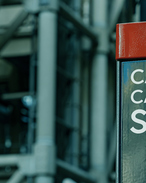This article is 8 years old. Images might not display.
Despite all the delays and a recent foofaraw with CIMIC over the final bill for the jetty construction cost, Chevron says that thanks to the magic of foreign exchange and currency fluctuations Gorgon will still come in at about $A55 billion overall.
Chevron chairman John Watson said the mammoth undertaking would drive long-term growth for the US oiler over the next 40-plus years.
"The long-term fundamentals for LNG are attractive, particularly in the Asia-Pacific region, and this is a significant milestone for all involved," he said.
Chevron Australia managing director Roy Krzywosinski, the man who has been ultimately responsible for Australia's biggest ever resource development, juggling the rosters of more than 8000 workers in a tightly constrained physical environment, said Australia was well-placed to meet growing demand for energy in the Asia Pacific region.
"Gorgon is an intergenerational project set to deliver reliable cleaner-burning energy and generate substantial earnings over its expected economic life of 40+ years," he said.
"Gorgon demonstrates that with proper management and the right workforce culture, industry and environmental stewardship can co-exist. The application of world-class technology at Gorgon, for instance the flatbed design of the flare, help protect and respect the unique native fauna."
At full capacity, Gorgon is expected to contribute 18% of Australia's total future LNG production delivering 15.6 million tonnes per annum, and at one stage was expected to produce some 6% of global LNG demand.
Despite a disharmonious relationship with the unions, Watson said workers could be congratulated on today's achievement.
"This is the result of the collaboration of hundreds of suppliers and contractors and many tens of thousands of people across the world during the project design and construction phases," he said.
Today's milestone has been a long time coming, and follows weeks of careful checking and rechecking of the final systems before gas was introduced from the Io-Janz field for the first time.
Chevron purchased gas from the international market at the end of 2015 to start commissioning the first of the 5.2MMtpa trains, and when Energy News visited Barrow Island in late February to check on the progress of Train 1, the pipe was visibly white: ice cold despite the baking Kimberley heat.
The plant and major operations facility control centre and workshops were all up and running and ready to start taking gas from the Io-Janz field, and the company was convinced that the first cargo would set sail before the end of March, the timeline Gorgon has been working towards for such a long time.
As it stands today, the supermajor has met its deadline with two weeks to spare.
LNG for April delivery in Asia eased to $4.30 per million British thermal units last week, and it is expected to fall below $4 during the summer as supply continues to pick up from new projects, although that is the spot price, and much of Gorgon will be sold into more robust long-term contracts.
While it is delivering into one of the worst LNG markets in decades, in early 2015 Chevron expected to generate around $1 trillion to Australia's GDP out to 2040 at an average of $32 billion per annum once Gorgon and Wheatstone are complete.
Peak lobby group the Australian Petroleum Production and Exploration Association welcomed this morning's announcement.
CEO Dr Malcolm Roberts congratulated operator Chevron and its joint venture partners ExxonMobil, Royal Dutch Shell, Osaka Gas, Tokyo Gas and Chubu Electric Power on the achievement of today's milestone.
Dr Roberts said Gorgon was the latest project in a wave of unprecedented LNG investment that would deliver enduring benefits for all Australians.
"The economic benefits to Australia during its construction have been enormous - more than 10,000 direct jobs and more than $34 billion spent on local goods and services," he said.
"But the long-term benefits will be even greater with Gorgon expected to generate GDP growth of more than $440 billion over the next two decades of operations and additional federal revenue of around $69 billion.
"Every shipment of gas that sails from Barrow Island means more wealth for Australia and more cleaner-burning energy for Asia."
Dr Roberts said Australia was reaping the benefits of $200 billion worth of new investment that would see LNG exports surge from 30 million tonnes last year to more than 85 million tonnes by 2020.
Four new LNG projects have entered production since 2014 (Queensland Curtis LNG, Gladstone LNG, Australia Pacific LNG and Gorgon) and another three are still under construction (Prelude Floating LNG, Wheatstone and Ichthys).
Dr Roberts said the industry's growth has put Australia on track to overtake Qatar as the world's largest LNG exporter in 2018.
The recent BP Energy Outlook forecast natural gas to be the world's fastest growing traditional fuel - gas consumption is expected to grow by 1.8% a year to 2035.






















